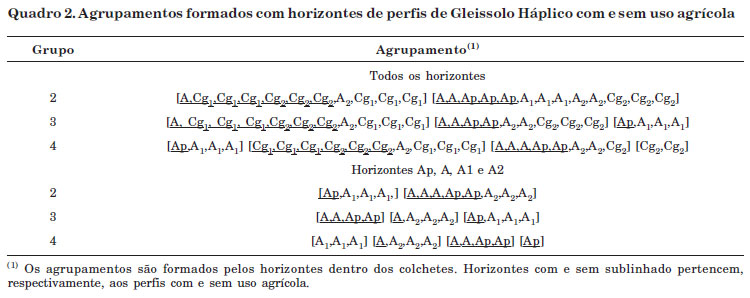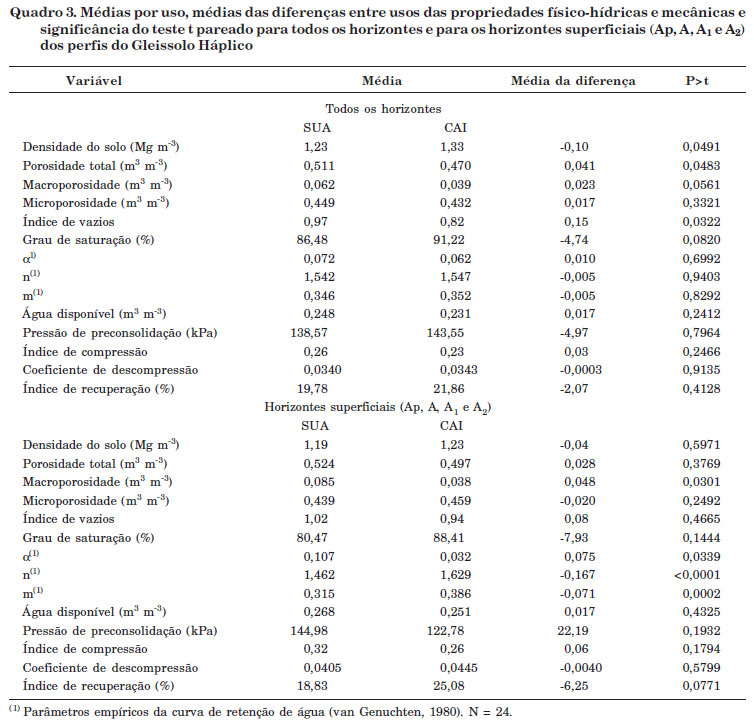The conversion of natural areas for agricultural use can degrade the soil structure and increase the occurrence of compression. This study aimed to evaluate changes in the physico-mechanical and hydro-physical properties of an Endoaqualf, caused by the conversion of a natural area into a rice field. Hydro-physical (density, porosity, macroporosity, microporosity, void ratio, and water retention) and mechanical properties (preconsolidation pressure, compression index, coefficient of decompression, and recovery rate) were evaluated in the horizons A1 (0.0-0.25 m), A2 (0.25-0.51 m), Cg1 (0.51-0.92 m) and Cg2 (0.92-1.20+ m) in soil of a natural area and in Ap (0.0-0.17 m), A (0.17-0.40 m), Cg1 (0.40-0.70 m) and Cg2 (0.70-1.00+ m) of soil under rice. Cluster analysis showed that eight years of conventionally tilled rice under flood irrigation did not significantly alter the physico-mechanical and hydro-physical properties. However, rice cultivation increased bulk density and reduced the void ratio, total porosity and macroporosity. The ratio of elasticity with bulk density, porosity and void ratio was affected by the type of soil structure, since compression and decompression were higher in horizons with prismatic than with massive structure.
preconsolidation pressure; compression index; soil elasticity











